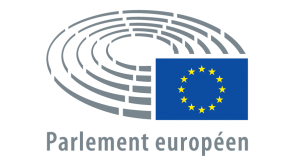
From daily commutes to cultural outings, public transport is a key driver of the vitality of Europe’s city centers. Yet across the 27 EU capitals, prices for monthly passes vary widely—revealing different urban strategies and priorities for central accessibility.
How much does it cost to reach the heart of the city?
Public transport isn’t just about mobility—it’s about access to economic, social and cultural life concentrated in city centers. Affordable subscriptions encourage regular visits, boost local businesses, and strengthen social ties. When prices climb too high, city centers risk becoming exclusive zones, out of reach for many.
In Paris, for example, the monthly Navigo pass now costs €88.80 (up from €86.40 in January 2025). While among the top 3 most expensive capitals, this pass offers unlimited travel across the entire Île-de-France region, connecting suburbs to the city center and reinforcing Paris’s central role in the metropolitan area.
Dublin and Stockholm: expensive access to central areas
With a monthly pass at €115, Dublin tops the chart. Its public transport network—composed mainly of buses and trams—does not include a metro, which may limit direct access to the city center, especially from outlying areas.
Stockholm follows closely with a monthly pass of €94. Despite a well-developed system, the high cost may deter low-income commuters from traveling into the core of the city on a daily basis.
Eastern Europe: where city centers remain accessible
In Bucharest, Budapest, and Prague, public transport is dramatically more affordable. Monthly subscriptions cost €16.08, €21.50, and €21.95, respectively. These low costs make central areas accessible to all —from students to retirees—and contribute to the economic and social vibrancy of the downtown areas.
Rome: affordable, but with limits
With a monthly pass at €35, Rome offers a relatively affordable option. Yet the city’s limited metro system (only three lines) weakens overall connectivity and limits the ease with which residents can reach the historic city center—unless they rely on cars, which congest the area further.
Berlin: tariff innovation boosts central mobility
Since 2023, Berlin offers the Deutschlandticket: for €58 a month, residents gain unlimited access to public transport throughout Germany, including urban and suburban rail networks. This national initiative, aimed at combating inflation, also strengthens the functional centrality of Berlin by enabling broad, low-cost access from surrounding areas.
Tallinn and Luxembourg: free access to the center—and beyond
In Tallinn, public transport has been free for residents since 2013; enhancing inner-city mobility and reducing car use. Visitors still pay about €30 per month.
In Luxembourg, the entire country—including its capital city—is fare-free for everyone since 2020. This bold move, driven by environmental and social goals, makes the city center a natural, inclusive, and car-free destination.
Lisbon: free mobility for the youngest and oldest
Since April 2022, Lisbon grants free transport access to young people under 18 (or 23 for students) and seniors over 65. This supports social inclusion and city center accessibility, especially for those who might otherwise remain isolated. “For many seniors, taking the metro or bus helps break social isolation,” notes Mayor Carlos Moedas.
Malta: a symbolic but targeted move
In Malta, transport became free in 2022, primarily for local bus services (excluding express lines and ferries). Though Valletta’s city center is compact, this reform helps ensure better connectivity between the capital and surrounding towns, reinforcing its central role on the island.
Affordable mobility = thriving city centers
Cities that keep public transport affordable—or free—are making strategic choices to foster active, inclusive, and sustainable city centers. On the other hand, high fares can lead to spatial segregation, discourage central visits, and stall the transition away from car dependency.
More InformationThe cost of public transport is more than a budget issue. It’s a key factor in urban justice and city center revitalization strategies.

